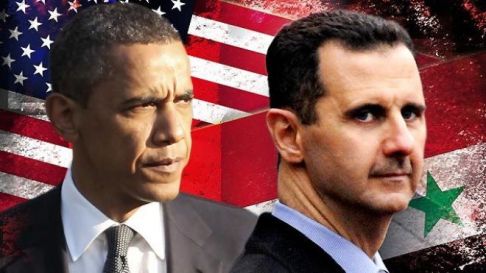1) In chapter 5 of Dilemmas of Reconciliation by Larry May, a definition of ” crimes against humanity” is given, “The designation of crimes against humanity is supposed to pick out the most heinous forms of crime , a crime that shocks the “public conscience” of the world community or that violates the “laws of humanity,'” (May p 146).
Crimes against humanity in the context of Obama’s address to the nation on Syria – when did the individuals within Syria’s civil disputes turn into an international jus cogen crime against humanity? What were the qualifications? Will third party intervention produce peace or reconciliation as Tom Keating implies?
2) If the authors of Dilemmas of Reconciliation have implied that the use of the Western court systems are ineffective and have deduced that the facts are essential to reconciliation, what method then do the authors propose to collect these “collective narratives?”
3) When reconciliation of a nation or individual is brought to the younger generations through history and its portrayal in textbooks, who will get the credit for the reconciliaton? It certainly will not be the victims. Is credit part of the reconciliation process?
4) The text Afro – Latino Voices: Narratives from the Early Modern Ibero-Atlantic World, 1550-1812 is one of the few academic texts that shows the post trans-Atlantic slave trade trials between a recovering African people and their oppressors. These are some of the earliest attempts by African Americans to receive reconciliation from imperialism and enslavement on a micro level. The important aspect of this textbook is that it shows the original text that the defendant brought to the courts and more importantly, how it was translated by Western court systems and eventually presented – often with a completely new agenda and purpose. In Dilemmas… Susan Dwyer attempts to argue that in the reconciliation process, “it can help to see that someone else can tell such a story,” (Dwyer p. 104). The question then becomes, how many hands does the victim’s original story have to change in order to adhere to the agenda of the “helpful” third party. In other words, as in Afro-Latino voices, is it possible to garner a “voice” of the victim or perpetrator on an international scale with language and third-party agendas acting as barriers?
5) The term “racial democracy” was first introduced in 1930 by congressman and sociologist Gilberto Freyre in his novel Casa-Grande e Senzala (The Master and the Slaves). It is often claimed by states (such as Brazil and France) to describe their citizens, as, regardless of heritage, they are only the nationality of the state in which they live. The question is, if states claiming “racial democracy” could ever reconcile on a macro-level if ever one of its citizens are just “French” or just “Brazilian?” How do these states reconciliation processes differ from others?
6) In chapter 4 of Dilemmas, Mark Forget forgot to define “crime.” In all of the discussions of truth commissions and war trials, the term “crime” is thrown about without any recollection of the word’s origins. There is a continuum between immorality/sin and criminality. There is also a very specific correlation between immorality and women. Dating back to the biblical story of Adam and Eve and the creation of original sin. When academics then speak of crime, they are confirming that whatever the law dictates is immoral is in fact immoral because it is law. There has been no discussion of the patriarchal bias in determining what is or is not a crime. An example of this can be seen in the discussions around abortion. Nearly ever state in the U.S. has declared abortion to be illegal. Nearly ever state in the U.S. does not have reproductive justice for those who are incarcerated. Law and “criminality” is spear- headed by a male dominated society and therefore can never truly be “just.” Forget defines crime as “much more than just lawbreaking; it usually involves actions that hurt people, and there are lasting, sometimes painful, human consequences,” (p. 112). The question is whether or not law and condemnation of crime would actually perpetuate reconciliation if the law adheres only to certain interest groups?
7) Why do we follow a Western model of court systems? Is following this Western model a continuation of a form of imperialism? During the colonial period, one of the methods the West utilized to degrade its victims was to instill the idea that written word and not oral tradition was the more “modern” method of keeping and restoring histories. This translated to all “traditional” concepts, and therefore people, were considered outdated -an inhibitor to progress and democracy and Western ideals were the key to “modernity.” It also gave the colonial powers an opportunity to write their own and others history with a positive lens. In using the Western model to deal with war crimes and crimes against humanity, is every culture truly being represented equally?
8) By the time a war trial is settled is is pertinent?
9) What is involved in “healing?” Does the victim ever “heal” and therefore can they ever truly be reconciled?
10) What role does gender play in reconciliation? Can men and women be reconciled in the same way?
11) Does the crime have to “shock humanity” in order for it to be reconciled?
12) What is the role of media in making a particular case one that “shocks international conscience?”

